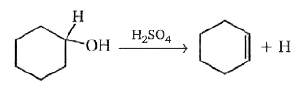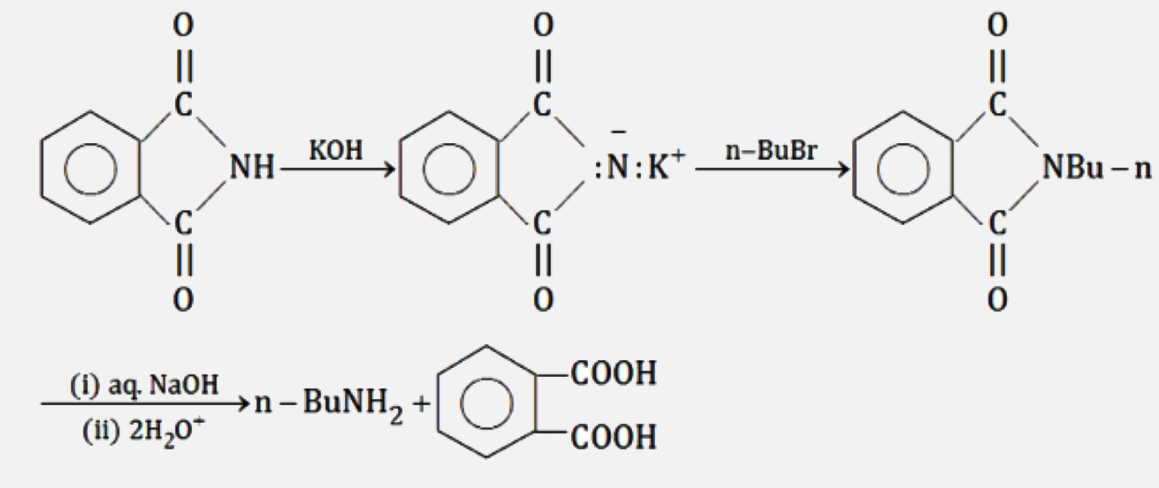Which one of the following reaction is called Rosenmund reaction ?
Aldehydes are reduced to alcohols
Acids are converted to acid chlorides
Alcohols are reduced to hydrocarbons
Acid chlorides are reduced to aldehydes
The correct Answer is:4
To determine which reaction is called the Rosenmund reaction, we can follow these steps:
1. Understanding the Rosenmund Reaction:
The Rosenmund reaction is a specific chemical reaction that involves the reduction of an acid chloride to an aldehyde.
2. Identifying the Reactants and Products:
In this reaction, the starting material is an acid chloride (R-C(=O)-Cl), and the product is an aldehyde (R-C(=O)-H).
3. Catalyst Used:
The reaction is typically carried out using hydrogen gas (H2) in the presence of a palladium catalyst (Pd) supported on barium sulfate (BaSO4). This catalyst helps facilitate the reduction process.
4. Reaction Mechanism:
During the reaction, the acid chloride reacts with hydrogen in the presence of the catalyst, leading to the cleavage of the carbon-chlorine bond and the formation of the aldehyde, along with the release of hydrochloric acid (HCl) as a byproduct.
5. Conclusion:
Therefore, the correct answer to the question is that the Rosenmund reaction is the reduction of acid chloride to aldehyde.
Final Answer:
The reaction called the Rosenmund reaction is the reduction of acid chloride to aldehyde.
The Rosenmund reaction is a specific chemical reaction that involves the reduction of an acid chloride to an aldehyde.
In this reaction, the starting material is an acid chloride (R-C(=O)-Cl), and the product is an aldehyde (R-C(=O)-H).
The reaction is typically carried out using hydrogen gas (H2) in the presence of a palladium catalyst (Pd) supported on barium sulfate (BaSO4). This catalyst helps facilitate the reduction process.
During the reaction, the acid chloride reacts with hydrogen in the presence of the catalyst, leading to the cleavage of the carbon-chlorine bond and the formation of the aldehyde, along with the release of hydrochloric acid (HCl) as a byproduct.
Therefore, the correct answer to the question is that the Rosenmund reaction is the reduction of acid chloride to aldehyde.
The reaction called the Rosenmund reaction is the reduction of acid chloride to aldehyde.
Topper's Solved these Questions
- ALDEHYDES, KETONES, CARBOXYLIC ACIDBOOK - RESONANCE ENGLISHCHAPTER - ALDEHYDES, KETONES, CARBOXYLIC ACIDEXERCISE - INORGANIC CHEMISTRY(d & f- Block Elments)
15 Videos
- ALKYL HALIDE, ALCOHOL, PHENOL, ETHERBOOK - RESONANCE ENGLISHCHAPTER - ALKYL HALIDE, ALCOHOL, PHENOL, ETHEREXERCISE - ORGANIC CHEMISTRY(Alkyl Halide, Alcohol,Phenol,Ether)
56 Videos
Similar Questions
Knowledge Check
Which one of the following reactions is not a redox reaction ?
AH++OH−→H2OBZn+2HCl→ZnCl2+H2C12H2+12Cl2→HClDZn+12O2→ZnOWhich one of the following is an example of Rosenmund's reduction ?
ACH3COClH2−−−−−−−−→Pd−BaSO4CH3CHO+HClBCH3C≡N(i)SaCl2−HCl−−−−−−−−−−−−→(ii)H2∅ΔCH3CHO+NH4ClCCH3COOHLiAlH4−−−→CH3CH2OH+H2ODCH3COClLiAlH4−−−→CH3CH2OH+HClWhich of the following reaction is an elimination reaction ?
A B
B C
C Dboth (a) and (b)
Dboth (a) and (b)
Rosenmund's Reaction
View SolutionRosenmund's Reaction
View SolutionGive balanced equations for the following name reactions :
Rosenmund reaction
View SolutionWhich one of the following reactions is an example for calcination process
View SolutionWhich of the following reactions is not a redox reaction?
View Solution

